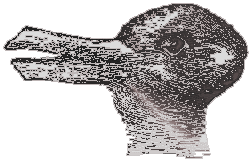 Gregory Eiselein
Gregory Eiselein Gregory Eiselein
Gregory Eiselein
Part 1. Identifications. This section will be worth 12 points. I will give you five quotations from texts we've read this semester. You will need to identify four of them by providing the name of the author, the title, and an explanation of the quotation's significance.
Part 2. Short Answer. This section will be worth 8 points. I will give you brief questions about the texts. You will answer each question.
Part 3. Essay Questions. This section will be worth 30 points. I will provide you with two of the following questions. You will need to write an essay in response to one of the two.
1. Choose two of the following four texts: Frederick Douglass's Narrative of the Life of Frederick Douglass, Gertrude Simmons Bonnin's "Impressions of an Indian Childhood / The Schooldays of an Indian Girl," Lorraine Hansberry's A Raisin in the Sun, or Sherman Alexie's The Lone Ranger and Tonto Fisfight in Heaven. Compare (and contrast) how the two authors portray the family. In what ways is the family a source of power? In what ways is the family a constraint on individual freedom, power, self-development, and self-expression?
2. Consider any of the texts that we have read so far this semester. Which one of these texts is the most political? Why? What are its political aims? How does it try to use literary writing to achieve that aim?
3. Sherman Alexie's The Lone Ranger and Tonto Fisfight in Heaven repeatedly uses humor to comment on Indian stereotypes, to depict characters and construct conflicts, and to raise larger issues about Indian life in contemporary America. Identify some of the more humorous scenes in these stories (which scenes are funniest and why?). Comment on the nature of the humor in each scene (is it ironic, farcical, self-deprecating, politically charged, dark and bitter, tension relieving, or what exactly?). And then explain how Alexie uses each scene (what's the purpose of the humor and/or the scene within the story or the collection?).
4. Who is really the realist here? The literary critic Henry Louis Gates says that Zora Hurston self-consciously avoided writing Their Eyes Were Watching God as a "realistic" novel. The playwright Amiri Baraka, on the other hand, calls Lorraine Hansbery a "critical realist" in her play A Raisin in the Sun. Do you agree? Do these two different assessments of Hurston and Hansbery seem accurate? You may agree, disagree, or partially agree with each description. But defend whatever position you take with a clear statement of your view as well as strong and well-explained evidence from the text.
5. Consider any of the texts that we have read so far this semester. In your opinion, which text gives us the most complete picture of an individual (fictional or not) and his/her personality? How does this text accomplish this representation of individual identity? Give specific examples. In your opinion, which text gives us the most extensive picture of a people, culture, or ethnic group? How does this text accomplish this representation of a communal identity? Give specific examples.
Note: While studying for this examination, please keep in mind that I am looking for your answers to be as specific as possible. Persuasive, informed use of concrete details selected from the works we studied will really strengthen your answers – regardless of the specific position you take.
Home | Department of English | Graduate Studies | Cultural Studies | Sex and the Body Politic | Kansas State University |
This page was updated on 11 March 2004. Other pages on this site may have been updated more recently.
These pages are copyright © 1995-2004 Gregory Eiselein.